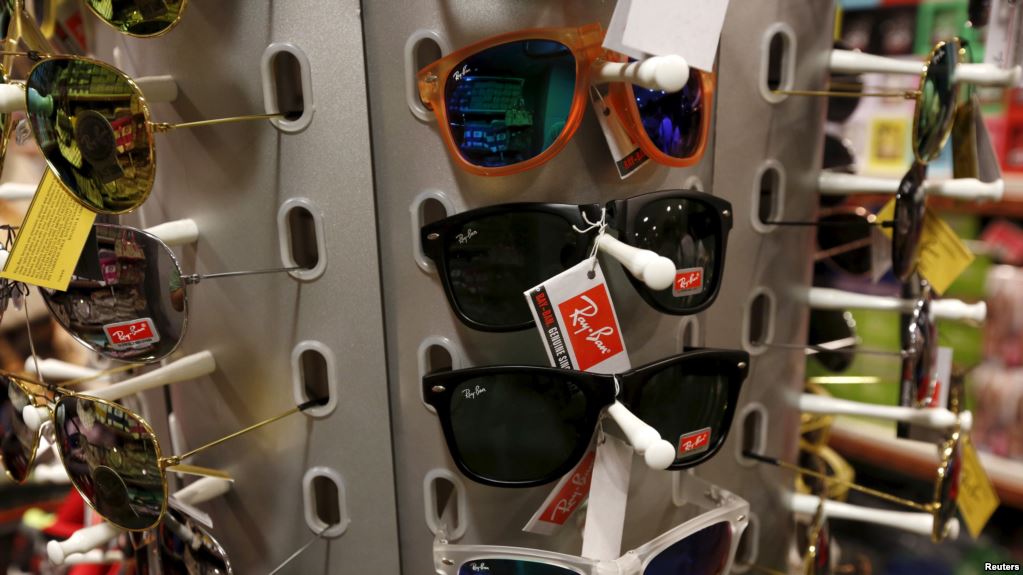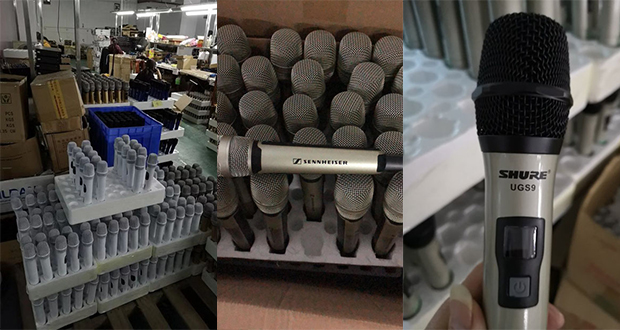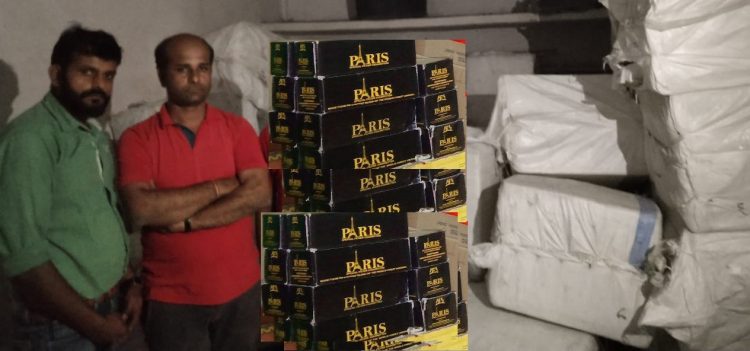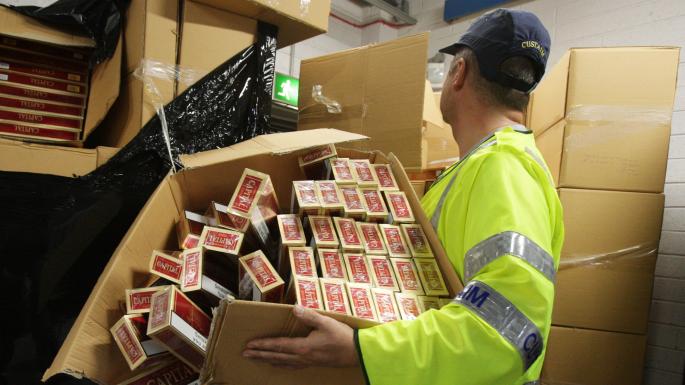
China Cracks Counterfeiting Ring That Sold $15M of Goods.
Chinese police have arrested 32 members of a group they said had made and sold up to 100 million yuan ($15 million) worth of counterfeit luxury goods from brands such as Louis Vuitton and Loewe, state news agency Xinhua said. The case highlights the challenge faced by brands in China, where products, such as cosmetics and even automobiles, run the risk of being copied. Police in the commercial capital of Shanghai also closed two assembly lines used to make the counterfeits and seized more than 4,000 bags, clothes and accessories, each of which they said cost the group 200 yuan to make. Authorities launched the investigation last year, following a tip that knock-off luxury handbags were being sold on Chinese mobile messaging app WeChat, which is operated by Tencent Holdings.
https://www.voanews.com/a/china-cracks-counterfeiting-ring-that-sold-15m-of-goods/4840668.html
Lear More
Counterfeit pro audio products seized in China factory raid.
A factory raid in China has resulted in the seizure of counterfeit Shure, Sennheiser, Yamaha and Harman audio products. News of the raid on the Enping Soundpu Electronics Equipment (also doing business as Voxpu Electronics Equipment) was released by Shure this week. The raid ocurred in October. The on-site enforcement action was initiated by Shure and accomplished with close cooperation and assistance from the Enping Public Security Bureau (PSB) and the Enping Administration of Industry and Commerce (AIC). The targeted factory is a repeat offender and known counterfeiter to the Enping enforcement authorities. Soundpu was fined in August 2018 by the Enping AIC after counterfeit Shure wireless microphones were found at Soundpu’s factory premises during a routine market investigation carried out in April 2018. Among the goods seized in the raid were wireless microphones and receivers, consoles, amplifiers, and processors. Shure has taken steps to initiate a criminal prosecution against the owner and managers of Soundpu, given its continued counterfeiting activities and blatant disregard for intellectual property rights.
Lear MorePolice detain two found with Sh5.7m in Euros, gold bars.
People will detain for 10 days two people arrested in Kalama, Marsabit County, with 4.6 kilograms of gold bars and 50,150 Euros (Sh5.7 million) for a probe into gold smuggling and money laundering. Milimani Senior Resident Magistrate Ms Zainab Abdul on Tuesday heard that police from the Transnational Organised Crimes Unit arrested Issa Mohammed Dubow and Yunis Maalim Muktar at a road block on the Isiolo–Moyale route on March 13. While applying for the detention order, investigating officer Sergeant Stanley Musembi told Ms Abdul that “police suspect the two to be gold smugglers and dealers in laundered money”. He said he was investigating money laundering and the smuggling of gold from neighbouring countries.
Lear More
Police detain two found with Sh5.7m in Euros, gold bars.
People will detain for 10 days two people arrested in Kalama, Marsabit County, with 4.6 kilograms of gold bars and 50,150 Euros (Sh5.7 million) for a probe into gold smuggling and money laundering.
Milimani Senior Resident Magistrate Ms Zainab Abdul on Tuesday heard that police from the Transnational Organised Crimes Unit arrested Issa Mohammed Dubow and Yunis Maalim Muktar at a road block on the Isiolo–Moyale route on March 13.
While applying for the detention order, investigating officer Sergeant Stanley Musembi told Ms Abdul that “police suspect the two to be gold smugglers and dealers in laundered money”.
He said he was investigating money laundering and the smuggling of gold from neighbouring countries.
Lear More
Hyderabad: Smuggled foreign cigarettes flood city.
Smuggled foreign cigarettes are back on the shelves of pan shops in the city prompting law enforcement agencies to step up the vigil. The Hyderabad Commissioner’s Task Force recently caught two traders from Begum Bazaar for illegally trading in foreign cigarettes and seized ‘Paris Cigarettes’ smuggled into the city. Previous year, the Directorate of Revenue Intelligence (DRI) had seized huge consignments of the cigarettes illegally smuggled into the country. This apart, Indonesian cigarette brands like ‘Djarum Black’ and ‘Gudang Garam’ are smuggled into the country by non-declaration and concealment. According to authorities, the usual route to smuggle cigarettes into the country is through air and sea. Through the sea route they reach Gujarat and Andhra Pradesh and by air, they reach Hyderabad via Hong Kong, Dubai, Singapore and Kuala Lumpur. Traditionally, the markets of Osmangunj, Begum Bazaar and Monda Market have been the wholesale hubs of illegal foreign cigarettes.
https://telanganatoday.com/hyderabad-smuggled-foreign-cigarettes-flood-city
Lear More
Destroying illicit goods cost Revenue more than €170,000.
The Revenue Commissioners has spent more than €170,000 shredding illegal cigarettes, destroying fake branded goods and getting rid of illicit alcohol over the past three years. The costs are part of more than €2.8 million spent managing illegal goods that were seized during operations between 2016 and 2018. Figures reveal how an average of €875,000 is spent by Revenue each year keeping the State Warehouse running. The warehouse is used to store illegal cigarettes and alcohol, along with other items, with €2.625 million spent on employee salaries, collection and transport of seized goods, security, cleaning and other costs. Illegal alcohol is disposed of when a sufficient amount is available, usually between 15 and 20,000 litres, according to the Revenue Commissioners.
https://www.thetimes.co.uk/article/destroying-illicit-goods-cost-revenue-more-than-170-000-v9hnmrdfk
Lear MoreTrends in Trade in Counterfeit and Pirated Goods
Illicit trade in fake goods is a major challenge in an innovation-driven global economy. It has a negative impact on the sales and profits of affected firms, as well as broader adverse effects on the economy as well as public health, safety and security. Organised criminal groups are seen as playing an increasingly important role in these activities, using profits from counterfeiting and piracy operations to fund other illegal activities. Counterfeiters operate swiftly in the globalized economy, misusing free trade zones, taking advantage of many legitimate trade facilitation mechanisms and thriving in economies with weak governance standards.
To provide policy makers with solid empirical evidence for taking action against this threat, the OECD and the EU Intellectual Property Office (EUIPO) joined forces to carry out a series of analytical studies. The results have been published in a set of reports, starting with the 2016 Trade in Counterfeit and Pirated Goods: Mapping the Economic Impact. The report showed that trade in counterfeit and pirated goods amounted to up to 2.5 % of world trade in 2013; when considering only the imports into the EU, they amounted to up to 5 % of imports.
Trade in counterfeit and pirated goods is a very dynamic and constantly changing phenomenon. Continuous measurement efforts are needed to monitor this risk. This report presents updated figures on the scale, scope and magnitude of trade in counterfeit and pirated goods, based on a statistical analysis of a unique database of half a million seizures of counterfeit goods. Structured interviews with trade and customs experts also contributed to the analysis.
The results are alarming. In 2016, counterfeit and pirated goods amounted to as much as 3.3% of world trade, and up to 6.8% of EU imports from third countries. These figure underscore once again the need for coordinated action against IP crime in general and trade in counterfeits in particular.
We are very pleased that our two institutions joined forces once again to update the results published in the 2016 OECD – EUIPO report Trade in Counterfeit and Pirated Goods: Mapping the Economic Impact and to assess the scope and magnitude of damages to world trade caused by counterfeit and pirated goods.
At the OECD, this study was conducted under the Task Force on Countering Illicit Trade (TF-CIT) of the OECD High Level Risk Forum. The Forum focuses on evidence-based research and advanced analytics to assist policy makers in mapping and understanding the market vulnerabilities exploited and created by illicit trade. The study was shared with other policymaking OECD bodies with relevant expertise in the area of trade and innovation.
Lear MoreRevenue seizes one million smuggled cigarettes at Dublin Port.
More than one million cigarettes have been seized by customs officers at Dublin Port. The seizure was made by officers with the Revenue during routine operations on Thursday, when the smuggled cigarettes were discovered. The unstamped cigarettes were found when a cargo of freight which had arrived into Dublin from Rotterdam in the Netherlands was examined. The seized cigarettes, branded ‘Marlboro’, had a retail value of almost €500,000, and would have represented a potential loss to the Exchequer of €422,000 if they had been smuggled successfully. Investigations into the seizure are ongoing.
https://www.thejournal.ie/smuggled-cigarettes-revenue-4546389-Mar2019/
Lear MoreRevenue seizes one million smuggled cigarettes at Dublin Port.
More than one million cigarettes have been seized by customs officers at Dublin Port. The seizure was made by officers with the Revenue during routine operations on Thursday, when the smuggled cigarettes were discovered.
The unstamped cigarettes were found when a cargo of freight which had arrived into Dublin from Rotterdam in the Netherlands was examined.
The seized cigarettes, branded ‘Marlboro’, had a retail value of almost €500,000, and would have represented a potential loss to the Exchequer of €422,000 if they had been smuggled successfully.
Investigations into the seizure are ongoing.
https://www.thejournal.ie/smuggled-cigarettes-revenue-4546389-Mar2019/
Lear More
Destroying illicit goods cost Revenue more than €170,000.
The Revenue Commissioners has spent more than €170,000 shredding illegal cigarettes, destroying fake branded goods and getting rid of illicit alcohol over the past three years.
The costs are part of more than €2.8 million spent managing illegal goods that were seized during operations between 2016 and 2018.
Figures reveal how an average of €875,000 is spent by Revenue each year keeping the State Warehouse running. The warehouse is used to store illegal cigarettes and alcohol, along with other items, with €2.625 million spent on employee salaries, collection and transport of seized goods, security, cleaning and other costs.
Illegal alcohol is disposed of when a sufficient amount is available, usually between 15 and 20,000 litres, according to the Revenue Commissioners.
https://www.thetimes.co.uk/article/destroying-illicit-goods-cost-revenue-more-than-170-000-v9hnmrdfk
Lear More


